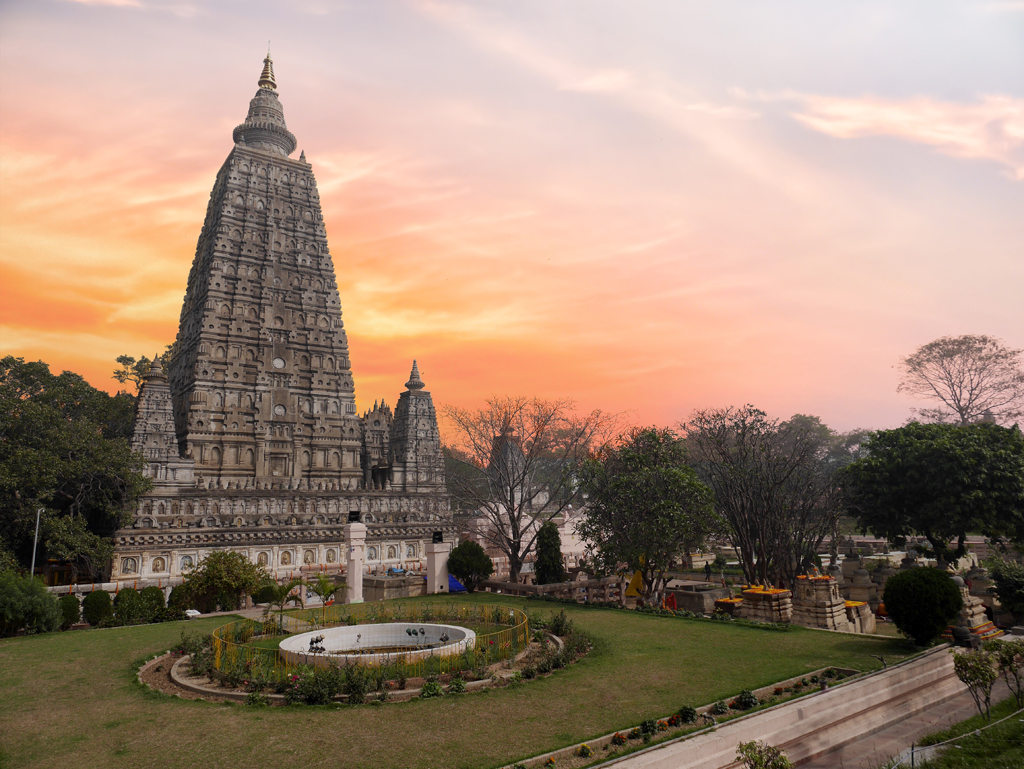Introduction:
Nestled in the serene town of Bodh Gaya, Bihar, the Mahabodhi Temple Complex stands as an iconic symbol of enlightenment and spiritual significance. This sacred site is believed to be the place where Gautama Buddha attained enlightenment, making it one of the most revered pilgrimage destinations for Buddhists worldwide. Steeped in history, spirituality, and architectural grandeur, the Mahabodhi Temple Complex offers a captivating journey into the heart of Buddhism. Join us as we embark on a virtual tour and unravel the timeless allure of this remarkable site.

Historical Significance:
The history of the Mahabodhi Temple Complex dates back to the 3rd century BCE when Emperor Ashoka, a devout Buddhist, erected a shrine on the spot where the Buddha achieved enlightenment. Over the centuries, the temple complex has undergone numerous renovations and restorations, evolving into its present form. In 2002, it was designated as a UNESCO World Heritage Site, further cementing its historical and cultural importance.
Architectural Marvels:
The Mahabodhi Temple, the centerpiece of the complex, is a magnificent architectural marvel that showcases a blend of various architectural styles spanning several centuries. Its main tower, soaring to a height of 55 meters, is adorned with intricate carvings and depicts stories from the life of Buddha. The temple complex also houses several other temples and monasteries built by devotees from different Buddhist traditions, including the Thai Monastery, Japanese Temple, and Tibetan Monastery, each reflecting their unique architectural styles.
The Bodhi Tree:
The sacred Bodhi Tree, located within the temple complex, is an object of veneration and utmost reverence for Buddhists. It is believed to be a direct descendant of the original Bodhi Tree under which the Buddha attained enlightenment. Devotees from all over the world gather around the tree to meditate, offer prayers, and seek spiritual solace. The peaceful ambiance and the gentle rustling of leaves create an aura of tranquility, inviting visitors to introspect and connect with their inner selves.

Spiritual Significance:
Visiting the Mahabodhi Temple Complex is an ethereal experience that transcends religious boundaries. The complex serves as a pilgrimage site for Buddhists from various traditions, as well as a place of curiosity and fascination for people interested in exploring Buddhism. The atmosphere is filled with a sense of spiritual energy, and the devotion and faith of the pilgrims are palpable, creating a transformative atmosphere for all who visit.
Exploring Bodh Gaya:
Beyond the Mahabodhi Temple Complex, Bodh Gaya offers a plethora of cultural and historical attractions. The Archaeological Museum adjacent to the temple houses a rich collection of artifacts, statues, and relics related to Buddhism. The Dungeshwari Cave Temples, where Buddha spent six years in austerity before attaining enlightenment, are located a short distance away and provide a tranquil retreat for contemplation. Additionally, Bodh Gaya boasts vibrant local markets, where visitors can find handicrafts, Buddhist art, and various spiritual souvenirs.

Conclusion:
A journey to the Mahabodhi Temple Complex at Bodh Gaya is a pilgrimage for the soul, an opportunity to delve into the rich tapestry of Buddhist history and spirituality. The aura of enlightenment that permeates the site is contagious, leaving visitors with a sense of peace, introspection, and reverence. Whether you are a devout Buddhist seeking spiritual awakening or a curious traveler interested in immersing yourself in a unique cultural experience, Bodh Gaya will undoubtedly leave an indelible mark on your heart and mind.
